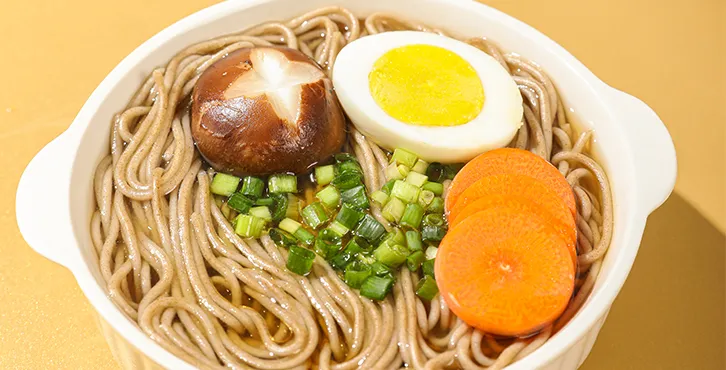Fresh Ramen Noodles for a Delicious Homemade Dining Experience
The Rise of Fresh Ramen Noodles A Culinary Trend
In recent years, the culinary world has witnessed a resurgence of interest in fresh ramen noodles, a beloved staple of Japanese cuisine. While instant ramen has long been a go-to for convenience and affordability, fresh ramen offers a different experience—one that emphasizes authenticity, flavor, and textures that cannot be replicated by packaged varieties. This article explores the rise of fresh ramen noodles, their unique characteristics, and the cultural significance they hold in both Japan and the global culinary landscape.
The Difference Between Fresh and Instant Ramen
At the heart of the ramen renaissance is the essential distinction between fresh and instant noodles. Fresh ramen noodles are made from wheat flour, water, salt, and an alkaline mineral water known as kansui. This unique composition gives fresh noodles a chewy texture and a distinct flavor that sets them apart from their instant counterparts, which are often fried and dehydrated. The cooking method also varies greatly; fresh noodles require just a few minutes of boiling, resulting in a tender yet firm bite that enhances the overall eating experience.
On the other hand, instant ramen, while convenient, sacrifices quality for speed. Many instant varieties are packed with preservatives and artificial flavors, which can detract from the authentic taste of traditional ramen. As culinary enthusiasts become more discerning, the appeal of fresh ramen has grown significantly, catering to those eager to savor authentic flavors and textures.
The Art of Ramen Making
Crafting fresh ramen noodles is an art form that requires skill and attention to detail. It begins with the careful selection of high-quality ingredients—premium flour and pure water are essential for achieving the perfect noodle. The dough is kneaded to develop gluten, which contributes to the chewy texture, and then rolled out into thin sheets before being cut into strands.
The process of ramen making is often regarded as a labor of love, with many ramen chefs dedicating years to perfecting their craft. Once the noodles are prepared, they are typically served with a rich broth, which can range from shio (salt) and shoyu (soy sauce) to tonkotsu (pork bone) and miso based options. Each broth has its own distinct flavor profile that complements the noodles, creating a harmonious balance that defines the dish.
ramen noodles fresh

A Cultural Phenomenon
Fresh ramen noodles are more than just a delicious meal; they are deeply rooted in Japanese culture and tradition. Ramen shops, known as ramen-ya, are popular gathering places where people come to enjoy a hearty bowl of noodles. Each region in Japan boasts its own unique ramen style, influenced by local ingredients and culinary customs. For instance, Sapporo is famous for its miso ramen, while Hakata is renowned for its tonkotsu variety.
As the popularity of ramen has spread globally, chefs around the world have begun experimenting with fresh ramen noodles, creating innovative dishes that incorporate diverse flavors and ingredients. From vegan ramen to fusion styles that blend different culinary traditions, the versatility of fresh ramen is making it a worldwide phenomenon.
The Future of Fresh Ramen Noodles
The future of fresh ramen noodles appears bright as more people become aware of their deliciousness and authenticity. Restaurants dedicated to serving fresh ramen are popping up in cities across the globe, while home cooks are experimenting with homemade versions. Cooking classes that focus on the art of ramen making have also gained traction, offering enthusiasts a chance to dive deeper into the craft.
Furthermore, with an increasing emphasis on health and wellness, fresh ramen noodles offer a more wholesome alternative to instant varieties. Made without artificial flavors or preservatives, they can be tailored to suit various dietary preferences, making them appealing to a broader audience.
Conclusion
In conclusion, fresh ramen noodles are more than just a trend; they represent a revival of culinary tradition that values quality, flavor, and authenticity. As enthusiasts continue to explore the depths of this beloved dish, fresh ramen is poised to remain a staple in both Japanese cuisine and the global food scene. Whether enjoyed in a bustling ramen shop or made at home, the handcrafted nature of fresh ramen noodles brings a unique and satisfying experience to tables around the world. Embrace the flavor, savor the texture, and indulge in the rich cultural heritage that fresh ramen noodles have to offer.
-
Fast Cook Noodles: Convenient Staples for Modern LifestylesNewsAug.23,2025
-
Italian Noodles: Versatile Staples of Global CuisineNewsAug.23,2025
-
Italian Noodles: A Timeless Culinary HeritageNewsAug.23,2025
-
Instant Cold Noodles: A Refreshing Culinary ConvenienceNewsAug.23,2025
-
Buckwheat Noodles: The Art and Nutrition of Handmade SobaNewsAug.23,2025
-
Low Calorie Soba Noodles: A Nutritious Choice for Healthy EatingNewsAug.23,2025
-
The Wholesome Delight of Organic NoodlesNewsAug.15,2025
Browse qua the following product new the we







